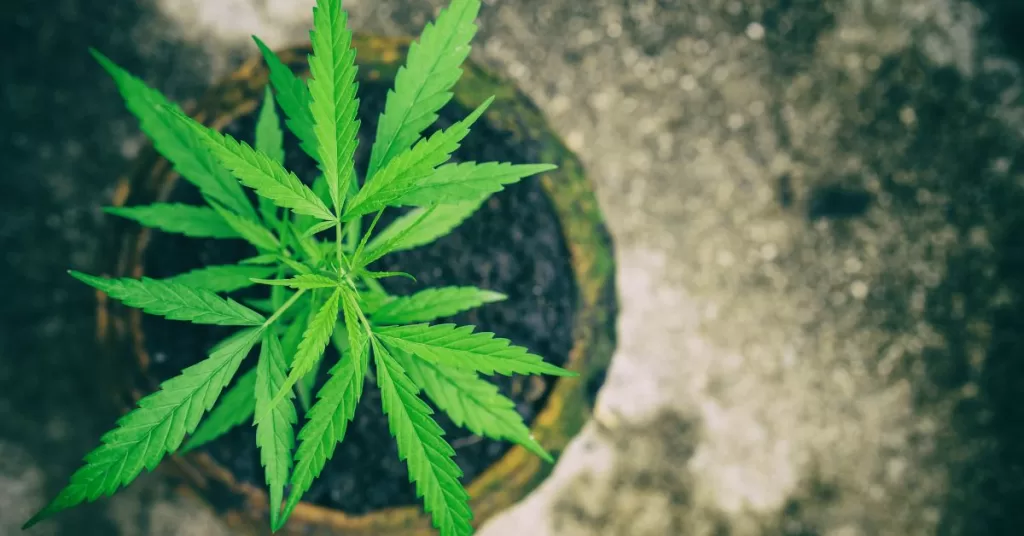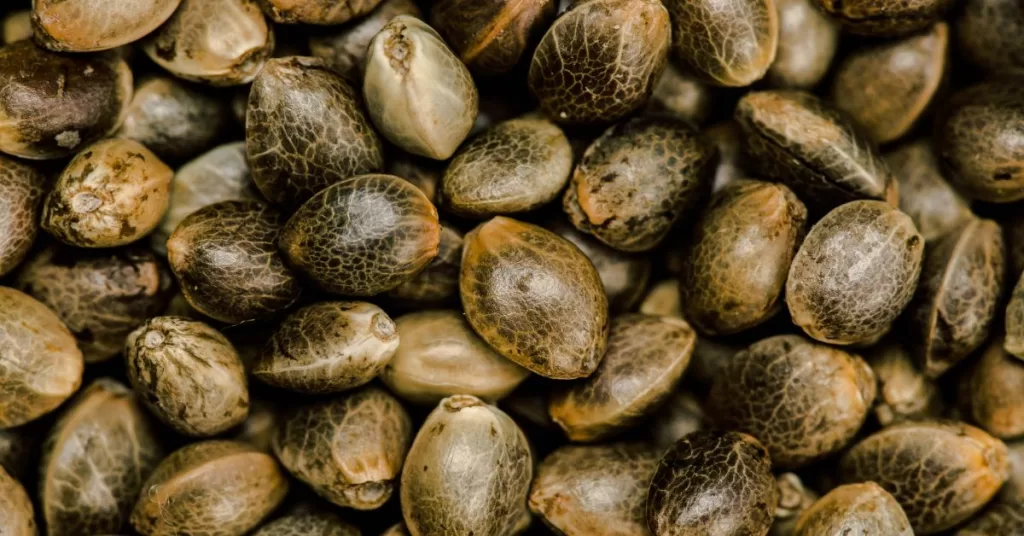Autoflower cannabis seeds are specially bred to flower automatically, without the need for a change in light cycle.
Unlike traditional photoperiod strains, which require a specific light schedule to induce flowering, autoflower plants transition from seed to harvest with no intervention needed. This unique characteristic is a result of crossing Cannabis ruderalis with indica and sativa strains.
Autoflowering plants have a shorter vegetative period, typically lasting 2-4 weeks, before they start developing buds.
They typically take around 8-10 weeks to reach harvest, making them ideal for growers who want quicker results.
This rapid growth cycle allows for multiple harvests in a single season, making them a popular choice among growers looking to maximize their yields.
Additionally, autoflower plants tend to be more resistant to pests and diseases and maintain a compact and stealthy size, making them suitable for growers who have limited space or need to keep a low profile.
Table of Contents
Are Autoflowering Cannabis Seeds Feminized?
Yes, most autoflower seeds available on the market today are feminized. This means that they are specifically bred to produce exclusively female plants.
Unlike photoperiod strains, which require a change in light cycle to induce flowering, autoflower plants do not rely on light conditions to determine their gender or flowering phase.
The Advantages of Growing Autoflower Seeds
Autoflower seeds offer a wide range of advantages that make them highly appealing to both novice and experienced growers. Let’s explore some of these advantages:
1. Hardy Genetics
Autoflower seeds inherit the resilience and hardiness of the Cannabis ruderalis plant.
They are more forgiving of beginner errors and can handle fluctuations in temperature, pests, and diseases with ease.
This makes them a great choice for growers who are still learning the ropes of cannabis cultivation.
With autoflower seeds, you can enjoy a successful harvest even if you make a few mistakes along the way.
2. Compact and Stealthy

Autoflowering plants are known for their small and stealthy size.
They typically grow to a height of 60-100cm, making them ideal for growers with limited space or those looking to cultivate discreetly.
Their compact size also makes them suitable for balcony, terrace, or even windowsill cultivation.
With autoflower seeds, you can enjoy growing cannabis without drawing unwanted attention.
3. Fast Harvests
One of the most enticing advantages of autoflower seeds is their fast growth and harvest period.
On average, it takes only 8-10 weeks for autoflower plants to reach the flowering stage and be ready for harvest.
This quick turnaround time allows growers to achieve multiple harvests throughout the growing season, maximizing their yield potential.
Whether you’re a beginner or an experienced grower, autoflower seeds provide a hassle-free cultivation experience.
4. Multiple Harvests
One of the greatest advantages of autoflower seeds is the ability to achieve multiple harvests in a single season.
Unlike photoperiod strains, which rely on changes in light cycles to trigger flowering, autoflowers start flowering based on their age.
This means you can start a new batch of autoflower seeds as soon as the previous one enters the flowering stage.
With proper planning, you can enjoy a continuous supply of fresh cannabis throughout the year.
5. Versatile Genetics
Autoflowering seeds offer the genetics of famous photoperiod varieties in an easy-to-grow and speedy format.
Breeders have crossed popular strains like Skunk, OG Kush, and Haze with autoflower varieties, resulting in autoflowering seeds that retain the prized flavor profiles and effects of their photoperiod counterparts.
Whether you’re a fan of high-THC, CBD-rich, or specific strain flavors, there is an autoflower seed option for you.
Why Choose Autoflowering Seeds?
Many cultivators opt for autoflower seeds due to their ease of cultivation and the numerous benefits they offer. Here are some reasons why growers choose autoflower seeds:
1. Low Maintenance
Autoflower plants are known for their low-maintenance nature, making them an excellent choice for both novice and experienced growers.
They are quick to grow, have thick stems, and sturdy structures, allowing them to withstand various environmental conditions.
These plants thrive in a variety of growing setups, ranging from premium growing tents to partially shaded outdoor areas.
2. Less Nutrient Demands
Autoflower plants require fewer nutrients compared to photoperiod strains.
They have smaller root systems and overall nutrient demands, which means growers can save money on nutrients and compost.
A good-quality potting mix is usually sufficient to support the growth and development of autoflower plants throughout their life cycle.
3. Space Efficiency

The compact size of autoflower plants makes them highly space-efficient.
They can be grown in small containers or confined spaces, allowing growers to maximize their available area.
This is particularly beneficial for indoor growers or those with limited garden space.
4. Versatile Growing Locations
Autoflower plants can thrive in various growing locations, including balconies, terraces, and windowsills.
They are also suitable for outdoor cultivation, as they are not dependent on specific light cycles.
This flexibility allows growers to cultivate autoflower plants almost anywhere, regardless of the geographical location or climate.
5. Potency and Flavor Variety
Autoflower seeds come in a wide range of potency options, including high-THC, medium-THC, and even low-THC varieties.
This variety allows smokers to choose a strain that suits their preferences and desired effects.
Additionally, many autoflower strains boast exceptional flavors, allowing users to savor the distinctive tastes of classic cannabis strains.
Cultivation Techniques for Autoflower Seeds
Now that you have chosen your autoflower strain, it’s time to dive into the cultivation techniques that will help you achieve the best possible results. Here are some tips and tricks for growing autoflower seeds:
1. Germination
Start by germinating your autoflower seeds using your preferred method.
Whether you choose the paper towel method, the water glass method, or another technique, make sure to provide the seeds with the right conditions for successful germination.
We recommend soaking the autoflower cannabis seeds in lukewarm water in a warm dark place for 24 hours.
It is a viability test that guarantees the seeds will germinate because the taproot pops.
2. Light Cycle
Autoflowering plants do not rely on specific light cycles to start flowering.
However, providing them with a consistent light schedule can help maximize their growth and yield potential.
Many growers opt for a light cycle of 18 hours on and 6 hours off throughout the entire growth cycle.
This ensures that the plants receive sufficient light energy to fuel their growth.
3. Nutrient Requirements
Autoflowering seeds have lower nutrient requirements compared to photoperiod strains. Start with a light nutrient regimen and monitor your plants’ response.
Overfeeding can lead to nutrient burn or other growth issues. It’s always better to start with less and gradually increase nutrient levels if needed.
4. Training Techniques

Autoflower plants have a limited vegetative period, so it’s crucial to choose training techniques that won’t stress or slow down their growth.
Low-Stress Training (LST) and leaf tucking are popular options for autoflowers. These techniques involve gently bending or manipulating the branches to create a more open canopy and promote better light penetration.
5. Watering
Autoflowering plants have smaller root systems and require less water compared to photoperiod strains.
It’s important not to overwater them as this can lead to root rot and other issues. Allow the growing medium to dry out slightly between waterings to ensure proper oxygenation of the roots.
6. Harvesting
Autoflowering plants have a relatively short flowering period, typically ranging from 8-10 weeks. Keep a close eye on the trichome development to determine the optimal harvest time.
Look for milky-white trichomes with a few amber ones for a balanced effect. Harvesting too early or too late can impact the potency and overall quality of your buds.
Choosing the Right Autoflower Strain
When it comes to selecting the right autoflower strain for your cultivation needs, there are a few factors to consider. Here are some key points to keep in mind:
1. Yield Potential

While autoflower plants tend to produce smaller yields compared to photoperiod strains, there are autoflower varieties that offer impressive yields.
Look for autoflower strains known for their high yield potential if maximizing your harvest is a priority.
2. THC and CBD Levels
Autoflowering strains come in a range of THC and CBD levels. Consider your desired potency and effects when choosing an autoflower strain.
Whether you prefer high-THC, balanced THC-CBD, or CBD-dominant strains, there is an autoflower option to suit your preferences.
3. Flavor Profiles
Autoflowering seeds offer a wide range of flavor profiles, from fruity and sweet to earthy and diesel.
Consider the terpene profiles of different autoflower strains to find one that aligns with your taste preferences.
4. Growth Characteristics
Pay attention to the growth characteristics of different autoflower strains, such as height, branching, and overall structure.
This will help you determine if a particular strain is suitable for your cultivation space and preferred training techniques.
What Kind of Soil Do Autoflower Cannabis Seeds Need?
Choosing the right soil mix is crucial for the successful cultivation of autoflower seeds. It is recommended to use a light and airy substrate that is low in nutrients. Here is a suggested potting soil ratio:
- 3 parts peat moss
- 3 parts compost
- 2 parts perlite
- 1 part vermiculite
Autoflower cannabis plants thrive in relatively small growing containers.
An 11-litre fabric pot is suitable for accommodating the root system of autoflower plants.
You can either sow the seeds directly into their final pot or transplant seedlings from a germination tray once they are 1-2 weeks old.
How to Grow Autoflowering Cannabis Seeds Indoors
Growing autoflower plants indoors provides growers with greater control over environmental factors such as light and water.
Since autoflower plants do not rely on light cycles to initiate flowering, cultivators can choose to keep the lights on for 18-24 hours per day.
A light cycle of 18-6 (18 hours of light, 6 hours of darkness) is sufficient to meet the energy needs of autoflower plants while also helping to save on electricity costs.
However, if cost is not a concern, keeping the lights on for 20-24 hours per day may result in larger yields and faster growth.
When it comes to choosing the right lighting for indoor cultivation, options such as high-intensity discharge (HID) lights, compact fluorescent lights (CFLs), or light-emitting diodes (LEDs) are commonly used.
Each type of light has its advantages and considerations, so it’s important to research and select the most suitable option for your setup.
How to Grow Outdoor Autoflower Cannabis Seeds
Autoflower plants are well-suited for outdoor cultivation, as they are not influenced by the light cycle of the seasons.
They can be sown from February to September, as long as the risk of frost has passed.
By staggering the planting of seeds every few weeks throughout the growing season, growers can ensure a continuous harvest every fortnight.
It is also recommended to experiment with different areas of your garden to determine which locations provide the best conditions for optimal growth.
This knowledge can help you make informed decisions for future cultivation efforts.
The Perfect Humidity and Temperature for Your Autos
While autoflower plants are generally hardy and resilient, they still require specific temperature and humidity levels to thrive. Aim for the following parameters:
- Temperature: 21°C
- Humidity during vegetative stage: 50-60%
- Humidity during flowering stage: 40%
Maintaining these optimal conditions will contribute to healthy growth and development, allowing your autoflower plants to reach their full potential.
What Kind of Nutrients Do Autoflowers Need?
Autoflower plants have lower nutrient demands compared to photoperiod strains due to their smaller size and faster growth cycle.
It is generally recommended to use half of the recommended nutrient dosage when applying products specifically designed for autoflower plants.
There are various nutrient solutions available on the market that are specifically formulated for autoflower plants.
Products such as Easy Boost, Easy Grow, and Easy Bloom from reputable brands can provide the necessary nutrients to support healthy growth and abundant yields.
What Kind of Water Do Autoflower Strains Need?
Watering autoflower plants requires careful attention to avoid overwatering.
These plants have smaller root systems compared to photoperiod strains and, therefore, require less water.
It is essential to ensure that the growing medium is completely dry before watering to prevent root rot and suffocation.
When watering autoflower plants, it is crucial to use water and nutrient solutions with a pH level of
Parting Remarks on Autoflower Cannabis Seeds
Autoflower cannabis seeds have revolutionized the world of cannabis cultivation, offering a range of advantages that make them highly desirable for growers of all levels of experience.
Their quick growth cycle, compact size, and resilience make them ideal for those with limited space or those looking to cultivate discreetly.
With proper care and cultivation techniques, autoflower cannabis seeds can provide multiple harvests in a single season, allowing for a continuous supply of fresh cannabis.
So why not give autoflower cannabis seeds a try and experience the joy of growing your own cannabis with ease and convenience?
Happy growing!
